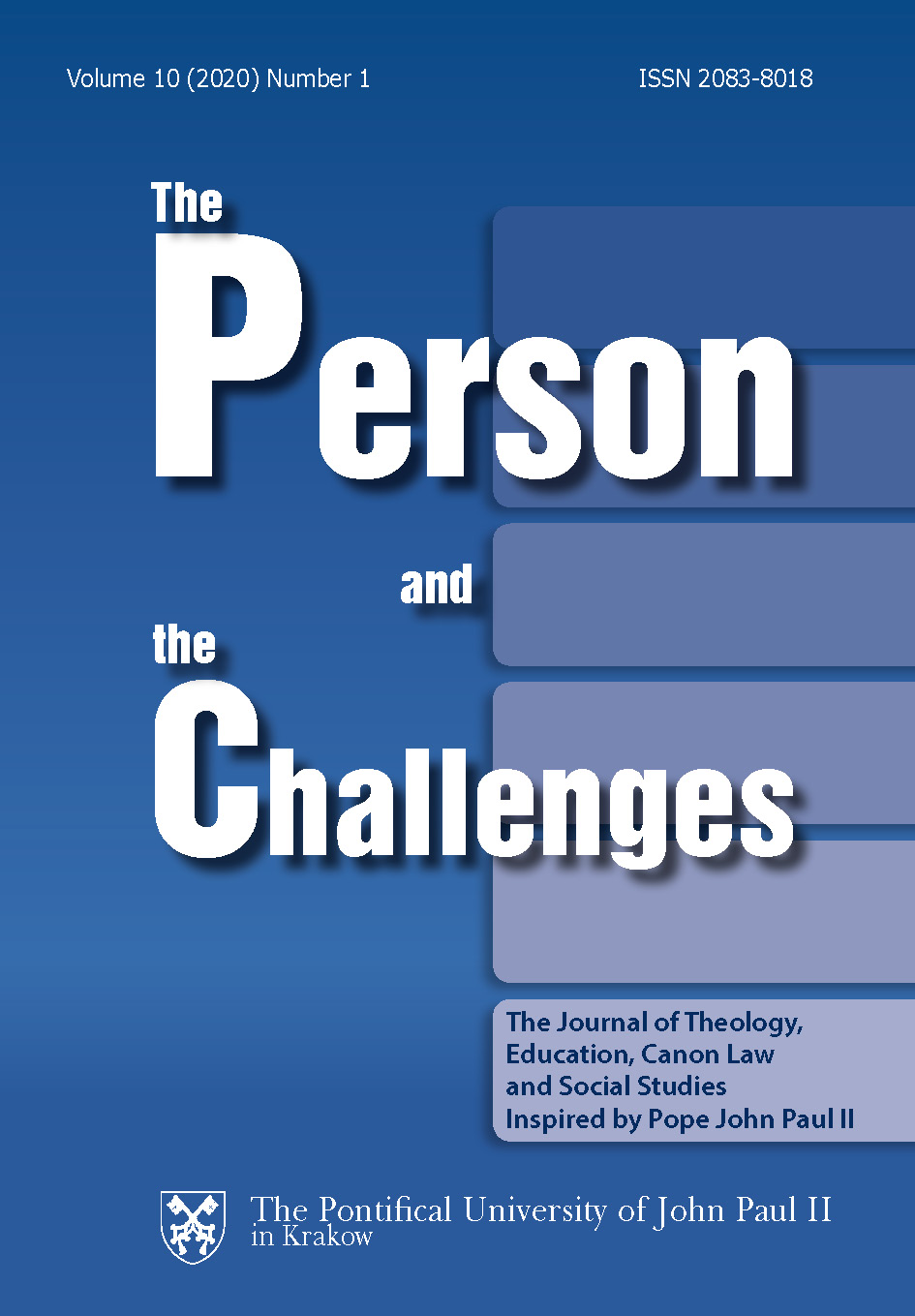When the Family becomes the Most Dangerous Place: Relations, Roles and Dynamics within Incestuous Families
DOI:
https://doi.org/10.15633/pch.3616Słowa kluczowe:
Incest, trauma, family, relationships, roles, dynamicsAbstrakt
The family is supposed to give the child a sense of security, belonging, acceptance and love.1 If, however, instead of these pleasant experiences, the most prevalent atmosphere is that of, abuse, trauma, violence, horror and fear, the child will not feel safe, accepted and loved. Even worse, later in life, he will unconsciously search for situations that will awaken in him, and re-create that primary atmosphere and underlying affects, because in his intrapsychic world, they equal belonging and familiarity. Clinical experience and research show that incest is one of the severest traumas caused to the human psyche and body. In the paper, we will first present the definition, prevalence and discuss factors such as the duration of the incest and the age of victims and perpetrators. Then, we will describe the relations, roles and dynamics within incestuous families, where the child finds himself with his own pain among people who should be trustworthy, who should give safety and a sense of being loved, but instead they abuse the child, violating all the boundaries, taking away one’s dignity and killing the soul.
Bibliografia
Barth J., Bermetz L., Heim E., Trelle S., Tonia T., The current prevalence of child sexual abuse worldwide: a systematic review and meta-analysis, “International Journal of Public Health” 58 (2013) 3, pp. 469–83.
Butler S., Conspiracy of silence: The trauma of incest, San Franciso 1996, Volcano Press.
Courtois C. A., Healing the incest wound: Adult survivors in therapy, 2010, W. W. Norton & Company.
Cvetek R., Bolečina preteklosti: Travma, medosebni odnosi, družina, terapija [Pain of the past: Trauma, interpersonal relationships, family, therapy], Celje 2010, Društvo Mohorjeva družba, Celjska Mohorjeva družba.
Dorais M., Don’t tell: The sexual abuse of boys, Quebec 2002, McGill-Queen’s University Press.
Finkelhor D., A sourcebook on child sexual abuse, Thousand Oaks 1986, CA: Sage Publications, Inc.
Finkelhor D., Shattuck A., Turner H. A., Hamby S. L., The lifetime prevalence of child sexual abuse and sexual assault assessed in late adolescence, “Journal of Adolescent Health” 55 (2014) 3, pp. 329–333.
Forward S., Buck C., Betrayal of innocence: Incest and its devastation, New York 1983, Penguin Books.
Garnefski N., Arends E., Sexual abuse and adolescent maladjustment: Differences between male and female victims, “Journal of Adolescence” 21 (1998) 1, pp. 99–107.
Geneva: World Health Organization, Gender mainstreaming for health managers: a practical approach (2011) http://www.who.int/gender-equity-rights/knowledge/health_managers_ guide/en/ (13.09.2017).
Gostečnik C., Relational family therapy: the systemic, interpersonal, and intrapsychic experience, New York; London 2017, Abingdon: Routledge.
Gostečnik C., Relacijska družinska terapija [Relational family therapy], Ljubljana 2004, Brat Frančišek: Frančiškanski družinski inštitut.
Gostečnik C., Zakaj se tebojim?[Why am I afraid of you?], Ljubljana 2016, Brat Frančišek: Teološka fakulteta: Frančiškanski družinski inštitut.
Gostečnik C., Relacijska paradigma in travma [Relational paradigm and trauma], Ljubljana 2009, Brat Frančišek in Frančiškanski družinski inštitut.
Johnson J. T., Mothers of incest survivors: Another side of story,1992, Indiana University Press.
Knauer S., Recovering from sexual abuse, addictions, and compulsive behaviors: “Numb” survivors, New York NY 2002, Haworth Press.
Lisak D., The psychological impact of sexual abuse: Content analysis of interviews with male survivors, “Journal of Traumatic Stress” 7 (1994) 4, pp. 525–548.
Lisak D., Hopper J., Song P., Factors in the cycle of violence: Gender rigidity and emotional constriction, “Journal of Traumatic Stress” 9 (1996) 4, pp. 721–743.
Marsh L., Incest: Family profiles and psychological implications (2004) http://www.geocities.com/Wellesley/Gazebo/2530/fam-prof.html (23.01.2007).
Munro K., Male sexual abuse victims of female perpetrators: Society’s betrayal of boys (2002) http://www.kalimunro.com/article_mother_son_sexual_abuse.html (2.08.2006).
Repič Slavič T., Gostečnik C., Relational family therapy as an aid toward resolving the trauma of sexual abuse in childhood in the process of separation in the couple relationship, “Journal of marital and family therapy” 43 (2017) 3, pp. 422–434.
Repič Slavič T., Nemikrikispolnezlorabe in novo upanje [Silent screams of sexual abuse and a new hope], Celje: Celjska Mohorjeva družba 2015, Društvo Mohorjeva družba.
Trepperr T. S., Barrett M. J., Systemic treatment of incest; a therapeutic handbook, New York; London 2014, Abingdon: Routledge.
Vientiane: Lao Statistics Bureau, Violence against children survey in Lao PDR: preliminary report (2016) https://www.unicef.org/laos/VAC_preliminary_report_ENG_FINAL_-_30_May_2016.pdf (13.09.2017).
Pobrania
Opublikowane
Numer
Dział
Licencja
Prawa autorskie (c) 2020 Tanja Repič Slavič

Utwór dostępny jest na licencji Creative Commons Uznanie autorstwa 4.0 Międzynarodowe.
Twórca oświadcza, że służą mu prawa autorskie do utworu i że nie są ograniczone w zakresie objętym niniejszym oświadczeniem oraz że utwór jest dziełem oryginalnym i nie narusza praw autorskich innych osób.
Twórca zezwala Uniwersytetowi Papieskiemu Jana Pawła II w Krakowie na nieodpłatne, niewyłączne i nieograniczone w czasie korzystanie z utworu, to jest:
- utrwalanie i zwielokrotnianie: wytwarzanie egzemplarzy utworu techniką drukarską, reprograficzną, zapisu magnetycznego oraz techniką cyfrową;
- obrotu oryginałem albo egzemplarzami, na których utwór utrwalono (wprowadzanie do obrotu, użyczenie lub najem oryginału albo egzemplarzy, publiczne wystawienie, wyświetlenie, a także publiczne udostępnianie utworu w taki sposób, aby każdy mógł mieć do niego dostęp w miejscu i w czasie przez siebie wybranym);
- włączenie utworu w skład utworu zbiorowego;
- udzielanie przez Uniwersytet Papieski Jana Pawła II w Krakowie sublicencji Creative Commons Uznanie autorstwa 4.0 Międzynarodowe (CC BY 4.0)
Uniwersytet Papieski Jana Pawła II w Krakowie udostępnia utwór na Platformie Czasopism należącej do uczelni, na licencji Creative Commons Uznanie autorstwa 4.0 Międzynarodowe (CC BY 4.0). Tym samym uprawnia wszystkich zainteresowanych do korzystania z utworu pod następującymi warunkami:
- zostanie podany autor i tytuł utworu,
- zostanie podane miejsce publikacji (tytuł czasopisma i adres internetowy do oryginalnie opublikowanego utworu).

